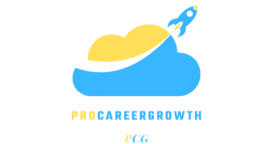Part1 : Basic Setup and Installation for Kubectl
Setting up your kubectl environment is a crucial step in learning Kubernetes. Here's a step-by-step guide to help you set up kubectl for learning purposes:
1. Install kubectl:
On Linux:
$sudo apt-get update && sudo apt-get install -y kubectl
On macOS (using Homebrew):
$brew install kubectl
On Windows:
- Download the
kubectlbinary from the official Kubernetes release page. - Add the path to the
kubectlexecutable to your system's PATH environment variable.
2. Set Up a Kubernetes Cluster:
Using Minikube (for local development):
Minikube allows you to run a single-node Kubernetes cluster on your local machine.
# Install Minikube (Linux/macOS)
$brew install minikube
# Start Minikube
$minikube start
Using Docker Desktop (for local development):
If you have Docker Desktop installed, you can enable Kubernetes from the Docker Desktop settings.
3. Configure kubectl to Connect to Your Cluster:
After setting up the cluster, you need to configure kubectl to connect to it.
# Point kubectl to the Minikube cluster (if using Minikube)
$kubectl config use-context minikube
4. Verify the Setup:
Run the following commands to verify that kubectl is correctly configured:
# Check kubectl version
$kubectl version
# View the cluster information
$kubectl cluster-info
# List nodes in the cluster
$kubectl get nodes
5. Explore Kubernetes Resources:
Now that your kubectl environment is set up, you can start exploring various Kubernetes resources:
# List all resources in the default namespace
$kubectl get all
# List pods in all namespaces
$kubectl get pods --all-namespaces
# Get detailed information about a specific pod
$kubectl describe pod <pod-name>
Additional Tips:
- Kubernetes Documentation:
- Refer to the official Kubernetes documentation for detailed information and tutorials.
- Kubernetes Dashboard (Optional):
- Optionally, you can install the Kubernetes Dashboard for a web-based graphical user interface to manage your cluster.
- $ kubectl apply -f https://raw.githubusercontent.com/kubernetes/dashboard/v2.0.0/aio/deploy/recommended.yaml
- Learning Resources:
- Explore online tutorials, courses, and documentation to deepen your understanding of Kubernetes concepts and usage.
- Follow the instructions in the documentation to access the dashboard securely.
By following these steps, you'll have a functional kubectl environment connected to a local Kubernetes cluster, allowing you to start learning and experimenting with Kubernetes.
